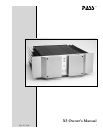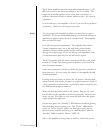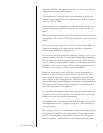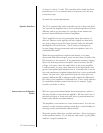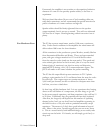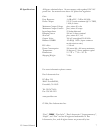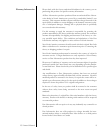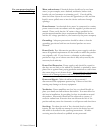
5
X5 Owner’s Manual
of about 9 volts to 15 volts. This switching will override the front
panel button, so if you want the button to operate, leave the rear
connection open.
So much for essential information.
The X5 is optimized for loads nominally rated at 4 ohms and above.
You can run the amplifiers into a lower nominal impedance without
difficulty, and we are not aware of a speaker on the market that
presents unusual difficulty with these amplifiers.
The X amplifiers do not care particularly about the reactivity of
the load. Reactive loads typically will have slightly less distortion
at a given voltage/current level than resistive loads, but will make
the amplifier run a little hotter. The X circuit was designed to
be quite happy driving electrostatic and other speakers, since it is
unconditionally stable.
When driving transformer-coupled loads directly, as in some
electrostatic and ribbon designs, some attention must be paid to the
DC character of the situation. If the transformer primary is being
driven raw with no protection from DC and your source has DC
voltage, or in cases where the small offset of the power amplifier
is still too much, you may create distortion in the transformer and
get less than optimal performance from it. Generally this is not the
case with transformer coupled loudspeakers, but it does occasionally
surface. In these cases, take special care that the source does not
contain a differential DC component, and confirm the differential
DC offset of the amplifier is sufficiently low. This is easily adjusted
by a qualified technician armed with the service manual. Again,
consult your dealer or call us.
We have a general recommendation about interconnects, which is
that they should cost less than the amplifier. We have tried a lot of
products and most of them work well, but as a practical matter we
cannot make blanket recommendations.
The amplifier is not sensitive to source interconnects. It is also not
sensitive to radio frequency pickup, which allows some flexibility in
choosing source interconnects without shields.
We prefer speaker cables that are thick and short. Silver and copper
are the preferred metals. If you find any cable made of gold, please
send me a couple hundred feet.
Speaker Interface
Interconnects and Speaker
Cables



